Jeep Avenger vs Nissan Ariya – Differences & prices compared
Compare performance, boot space, consumption and price in one view.
Find out now: which car is the better choice for you – Jeep Avenger or Nissan Ariya?
The Jeep Avenger (SUV) comes with a Electric, Petrol or Petrol MHEV engine and Automatic or Manuel transmission. In comparison, the Nissan Ariya (SUV) features a Electric engine with Automatic transmission.
When it comes to boot capacity, the Jeep Avenger offers 380 L, while the Nissan Ariya provides 468 L – depending on how much space you need. If you’re looking for more power, decide whether the 156 HP of the Jeep Avenger or the 435 HP of the Nissan Ariya suits your needs better.
In terms of consumption, the values are 15.50 kWh4.90 L per 100 km for the Jeep Avenger, and 17.70 kWh for the Nissan Ariya.
Price-wise, the Jeep Avenger starts at 21900 £, while the Nissan Ariya is available from 37300 £. Compare all the details and find out which model fits your lifestyle best!
Jeep Avenger
The Jeep Avenger is a compact SUV that brings a blend of rugged design and modern technology, making it ideal for both urban and off-road adventures. Its robust build and distinctive styling capture Jeep's iconic spirit while offering a comfortable and refined driving experience. With advanced safety features and a versatile interior, the Avenger caters to a wide range of drivers looking for practicality and excitement.
details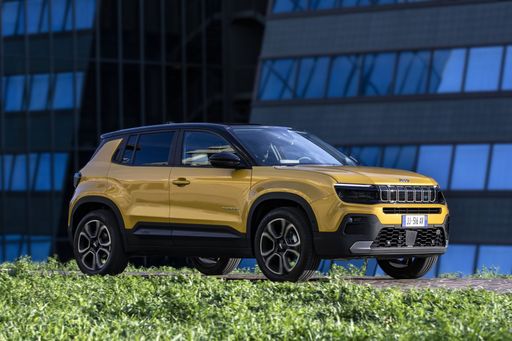 @ Stellantis
@ Stellantis
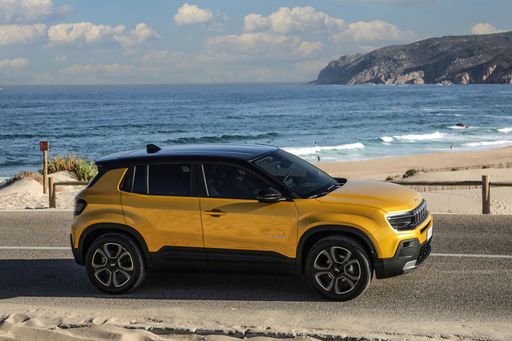 @ Stellantis
@ Stellantis
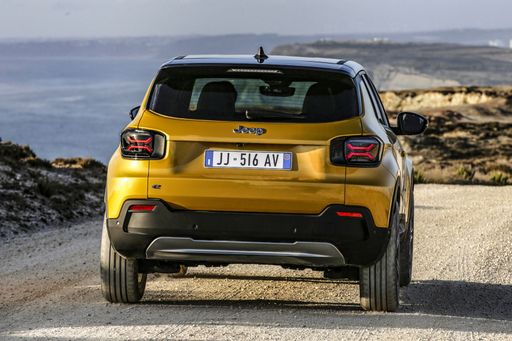 @ Stellantis
@ Stellantis
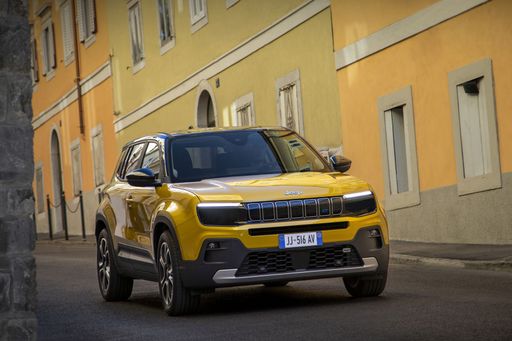 @ Stellantis
@ Stellantis
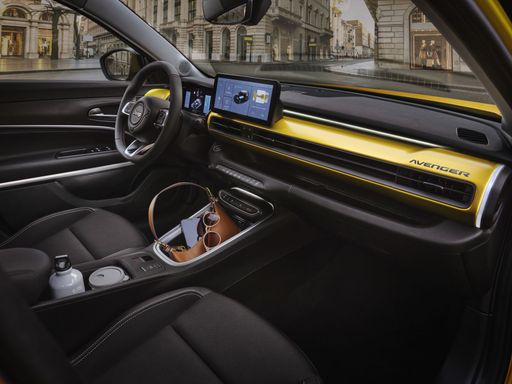 @ Stellantis
@ Stellantis
Nissan Ariya
The Nissan Ariya elevates the electric vehicle segment with its sleek design and advanced technology, providing a modern driving experience. Seamlessly blending comfort with performance, the Ariya offers an inviting and spacious interior that caters to both driver and passengers. Its innovative features make it a strong contender in the growing market for eco-friendly yet stylish automobiles.
details @ Nissan
@ Nissan
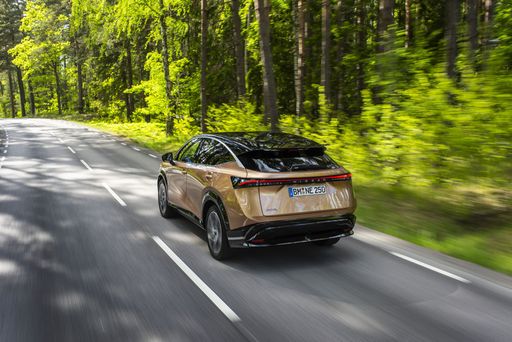 @ Nissan
@ Nissan
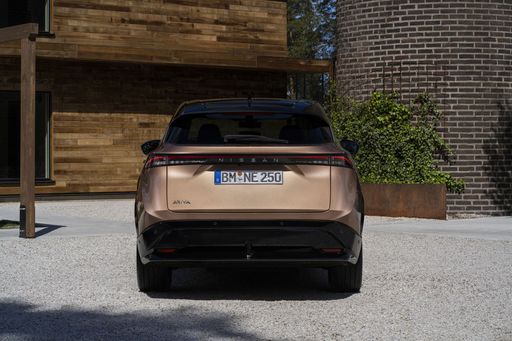 @ Nissan
@ Nissan
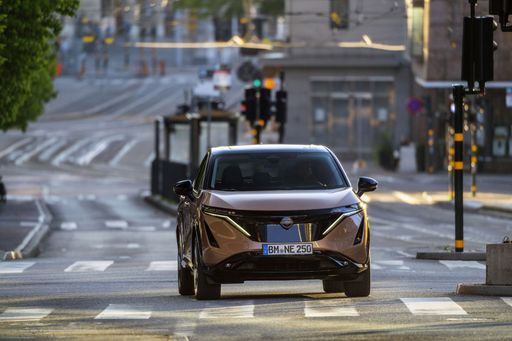 @ Nissan
@ Nissan
 @ Nissan
@ Nissan
 @ Nissan
@ Nissan
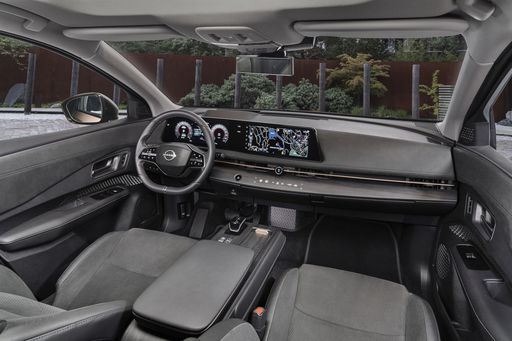 @ Nissan
@ Nissan

|

|
|
|
|
Costs and Consumption |
|
|---|---|
|
Price
21900 - 36900 £
|
Price
37300 - 54800 £
|
|
Consumption L/100km
4.9 - 5.7 L
|
Consumption L/100km
-
|
|
Consumption kWh/100km
15.50 kWh
|
Consumption kWh/100km
17.7 - 24.5 kWh
|
|
Electric Range
400 km
|
Electric Range
402 - 531 km
|
|
Battery Capacity
51 kWh
|
Battery Capacity
63 - 87 kWh
|
|
co2
0 - 129 g/km
|
co2
0 g/km
|
|
Fuel tank capacity
44 L
|
Fuel tank capacity
-
|
Dimensions and Body |
|
|---|---|
|
Body Type
SUV
|
Body Type
SUV
|
|
Seats
5
|
Seats
5
|
|
Doors
5
|
Doors
5
|
|
Curb weight
1180 - 1520 kg
|
Curb weight
1980 - 2259 kg
|
|
Trunk capacity
325 - 380 L
|
Trunk capacity
415 - 468 L
|
|
Length
4084 - 4088 mm
|
Length
4595 mm
|
|
Width
1776 mm
|
Width
1850 mm
|
|
Height
1527 - 1541 mm
|
Height
1650 mm
|
|
Payload
494 - 502 kg
|
Payload
396 - 420 kg
|
Engine and Performance |
|
|---|---|
|
Engine Type
Electric, Petrol, Petrol MHEV
|
Engine Type
Electric
|
|
Transmission
Automatic, Manuel
|
Transmission
Automatic
|
|
Transmission Detail
Manual Gearbox, Dual-Clutch Automatic
|
Transmission Detail
-
|
|
Drive Type
Front-Wheel Drive, All-Wheel Drive
|
Drive Type
Front-Wheel Drive, All-Wheel Drive
|
|
Power HP
100 - 156 HP
|
Power HP
218 - 435 HP
|
|
Acceleration 0-100km/h
9 - 10.6 s
|
Acceleration 0-100km/h
5 - 7.6 s
|
|
Max Speed
150 - 194 km/h
|
Max Speed
160 - 200 km/h
|
|
Torque
205 - 260 Nm
|
Torque
300 - 600 Nm
|
|
Number of Cylinders
3
|
Number of Cylinders
-
|
|
Power kW
74 - 115 kW
|
Power kW
160 - 320 kW
|
|
Engine capacity
1199 cm3
|
Engine capacity
-
|
General |
|
|---|---|
|
Model Year
2023 - 2025
|
Model Year
2022 - 2025
|
|
CO2 Efficiency Class
A, D, C
|
CO2 Efficiency Class
A
|
|
Brand
Jeep
|
Brand
Nissan
|
Jeep Avenger
Unveiling the Jeep Avenger: A New Era of Innovation
The Jeep Avenger marks a significant milestone in automotive evolution, blending ruggedness with modern-day advancements. Established within the SUV category, the Avenger offers an eclectic mix of powertrains, including electric and hybrid options, catering to the diverse requirements of the modern motorist.
Powertrain Options: Efficiency Meets Performance
The Jeep Avenger presents multiple powertrain configurations, each designed to harmonise performance with efficiency. The electric version boasts a formidable 156 PS and a battery capacity of 51 kWh, enabling a remarkable 400 km of electric range. This places it at the forefront of environmentally friendly travel with a consumption of merely 15.4 kWh/100km.
Additionally, for those favouring classic combustion engines, the 1.2 e-Hybrid and the purely petrol 1.2 GSE T3 offer 100 PS and incorporate innovative mild-hybrid technology to enhance fuel efficiency while maintaining a spirited driving experience.
Advanced Engineering: Technology and Design
At the heart of the Jeep Avenger lies a well-engineered chassis, tailored for both agility and comfort. Measuring 4084 mm in length, 1776 mm in width, and up to 1534 mm in height, the Avenger ensures ample space within a compact footprint, ideal for urban manoeuvrability.
The vehicle supports its robust engineering with meticulous design details, from its substantial boot capacity of up to 380 litres to its five-door configuration, seamlessly blending functionality with aesthetic appeal.
Driving Dynamics and Performance
Front-wheel drive ensures that the Avenger's power is perfectly harnessed for both city streets and off-road trails. The vehicle's acceleration capabilities vary between 9 and 10.9 seconds from 0-100 km/h, a testament to its spirited performance ethos. With a maximum speed ranging up to 184 km/h, the Avenger is built to deliver thrilling drives.
Sustainability at the Forefront
As a reflection of Jeep's commitment to sustainability, the Avenger achieves commendable CO2 efficiency ratings spanning classes A to D. The electric model stands out with zero emissions, while hybrid options offer competitive CO2 figures, appealing to eco-conscious drivers.
Pricing and Trim Levels
The Jeep Avenger is strategically priced between 25,000 and 43,500 €, ensuring accessibility for a broad range of customers. With available trim levels such as Longitude, Altitude, and Summit, prospective buyers can tailor their vehicles to suit individual preferences, choosing from different feature sets and functionalities.
Conclusion: The Jeep Avenger's Promise
The Jeep Avenger is not just a new vehicle; it embodies a shift towards innovative, efficient, and dynamic motoring. By merging advanced technology with Jeep's legendary prowess, the Avenger is poised to redefine expectations within the SUV sector, offering both cutting-edge performance and unyielding reliability.
Nissan Ariya
Unveiling the Nissan Ariya: Revolutionizing Electric Mobility
Nissan has taken a bold step into the electric future with the introduction of the Nissan Ariya, a sophisticated and stylish SUV designed to redefine the electric vehicle (EV) landscape. As the automotive industry evolves, the Ariya emerges as a frontrunner, blending cutting-edge technology and exquisite design to offer a unique driving experience. In this article, we delve into the technical specifications and innovative features that make the Ariya stand out in the electric vehicle market.
Striking Design Meets Practicality
The Nissan Ariya has a commanding presence on the road, thanks to its sleek and aerodynamic design, which is both functional and visually appealing. With dimensions of 4595 mm in length, 1850 mm in width, and 1650 mm in height, the Ariya maintains a robust stance while offering ample interior space. The five-door configuration and a trunk capacity of up to 468 liters ensure practicality for everyday use, whether it's a family outing or a shopping spree.
A Spectrum of Power and Performance
At the heart of the Ariya lies a versatile electric drivetrain that caters to various driving needs. The model is available in several configurations, with battery capacities of 63 kWh and 87 kWh, ensuring a balance between performance and range. The front-wheel-drive variants offer power outputs ranging from 218 HP to 242 HP, perfect for those looking for efficiency in urban settings. For enthusiasts seeking performance, the all-wheel-drive versions deliver up to 306 HP, while the Ariya Nismo tops the range with a thrilling 435 HP.
Advanced Battery Technology
The Ariya's advanced battery technology is engineered to provide long-lasting energy, with an electric range from 402 km to 531 km depending on the variant. The Ariya achieves this impressive range using a reduction gearbox and delivers efficient consumption ranging from 17.7 kWh to 24.5 kWh per 100 km. With a focus on sustainability, the Ariya boasts zero CO2 emissions, underscoring Nissan's commitment to a greener future.
Seamless Connectivity and Innovative Features
The interior of the Ariya is a blend of comfort and cutting-edge technology. Nissan has equipped the SUV with an intuitive infotainment system that integrates seamlessly with smartphones, offering features such as navigation, entertainment, and driver assistance technologies. The Ariya's cabin is designed for comfort, with ergonomic seating for up to five passengers. The vehicle's acceleration ranges from 5 to 7.6 seconds, ensuring a responsive and dynamic driving experience.
Safety and Assistance Redefined
Ensuring passenger safety, the Nissan Ariya is equipped with an array of driver assistance features, including adaptive cruise control, lane-keeping assistance, and an around-view monitor for enhanced visibility. These cutting-edge technologies work together to provide peace of mind for drivers and passengers alike, making every journey as safe and smooth as possible.
Conclusion: Driving into the Future
The Nissan Ariya represents a significant milestone in Nissan's electrification strategy, offering customers a blend of performance, innovation, and ecology. As the automotive world transitions towards sustainable solutions, the Ariya stands out as a testament to Nissan's dedication to pioneering the electric vehicle market. With ongoing advancements and its impressive suite of features, the Ariya is poised to redefine what drivers expect from an EV in terms of style, substance, and sustainability.
The prices and data displayed are estimates based on German list prices and may vary by country. This information is not legally binding.
